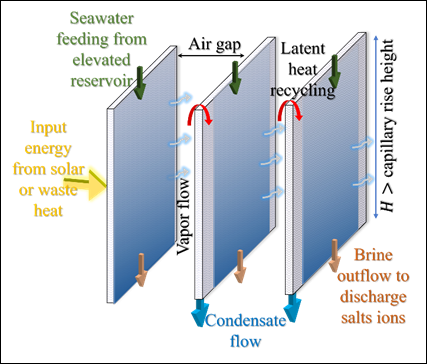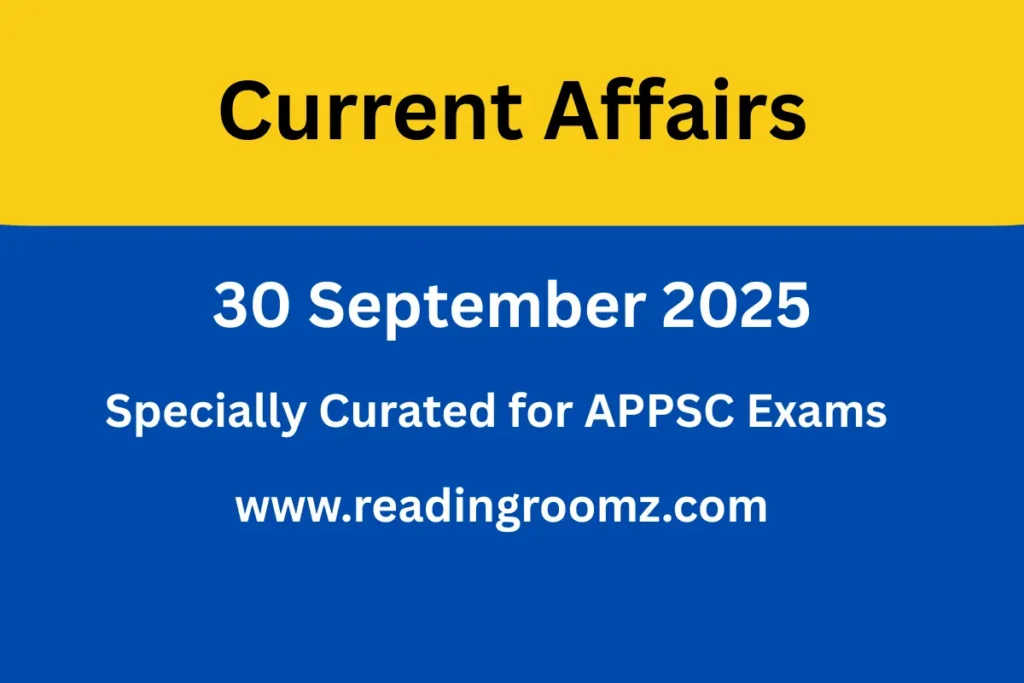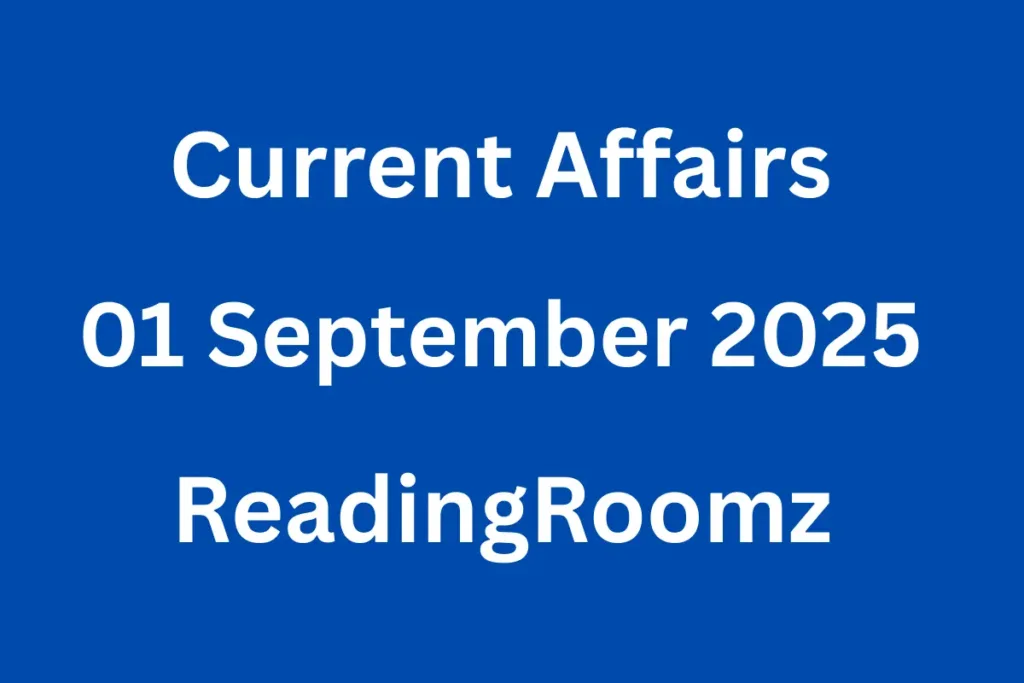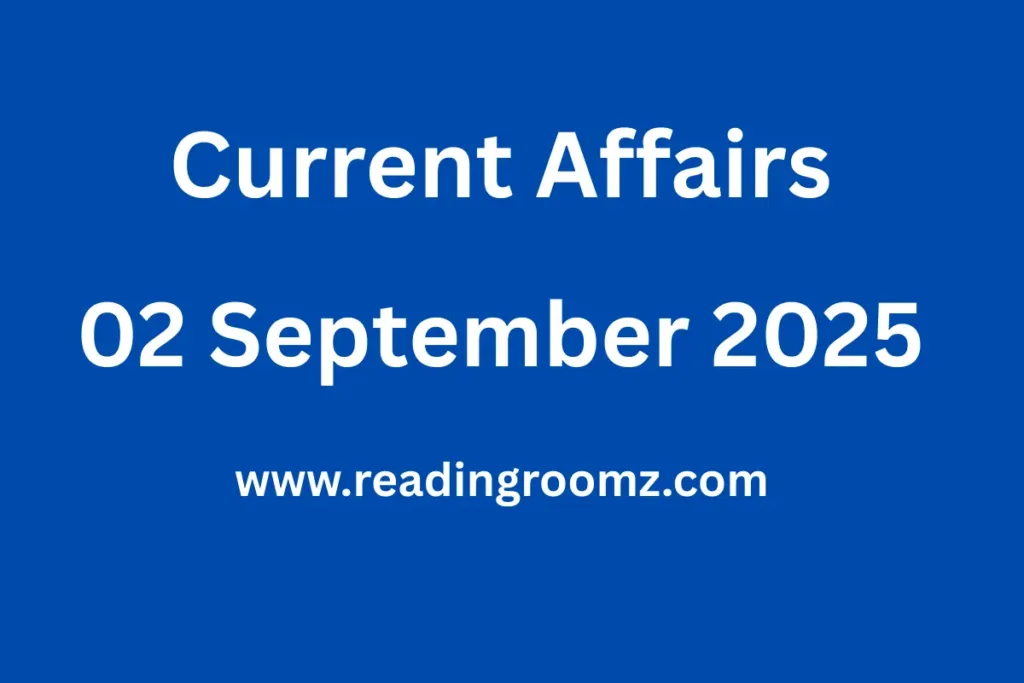Current Affairs 30 September 2025
Table of Contents
PIB Current Affairs
India–EFTA Free Trade Agreement to Come into Effect from October 1, 2025
India’s Free Trade Agreement (FTA) with the European Free Trade Association (EFTA) countries Iceland, Liechtenstein, Norway, and Switzerland is set to come into effect on October 1, 2025.
The agreement, which was finalised in March 2024.
Under the deal:
- EFTA countries have committed to invest $100 billion (approx. ₹8.3 lakh crore) in India over the next 15 years.
- India, in turn, will gradually reduce tariffs on select industrial and pharmaceutical goods, machinery, and watch key export sectors for EFTA nations.
- The agreement is expected to create over one million jobs in India by attracting high-quality foreign investment, especially in manufacturing, R&D, and services.
Read More about India-EFTA Free Trade Agreement.
National Biodiversity Authority Funds Red Sanders Conservation in Andhra Pradesh
- The National Biodiversity Authority (NBA), based in Chennai, has sanctioned ₹82 lakh to the Andhra Pradesh Biodiversity Board for the conservation of Red Sanders (Pterocarpus santalinus) under the Access and Benefit Sharing (ABS) mechanism.
- The project aims to raise one lakh Red Sanders saplings, which will be distributed to farmers as part of the Trees Outside Forests (ToF) programme.
- Red Sanders, native to the Southern Eastern Ghats, is found mainly in Anantapur, Chittoor, Kadapa, and Kurnool districts of Andhra Pradesh.
- The species is protected under the Wildlife Protection Act, 1972, and listed in CITES (Convention on International Trade in Endangered Species), which regulates its global trade.
India at the 2nd FAO Global Conference in Rome
Union Minister for Fisheries, Animal Husbandry & Dairying Shri Rajiv Ranjan Singh represented India at the 2nd Global Conference on Sustainable Livestock Transformation organized by the Food and Agriculture Organization (FAO) in Rome. India’s livestock sector now contributes 31% to agricultural Gross Value Added (GVA) and 5.5% to the national economy. India is the world’s largest producer of milk, accounting for 25% of global output with an annual production of 239 million tonnes, and also the second-largest producer of eggs and a leading exporter of buffalo meat.
Key initiatives from India’s livestock and dairy transformation journey:
- Rashtriya Gokul Mission: Conserving indigenous cattle breeds — 92 million animals benefited, supporting over 56 million farmers.
- National Digital Livestock Mission (Bharat Pashudhan): Over 353 million animals and 94 million livestock owners digitally registered for traceability and animal health management.
- World’s Largest Livestock Vaccination Programme: Administering 1.2 billion doses annually to combat major animal diseases.
- Animal Husbandry Infrastructure Development Fund: USD 3.5 billion initiative supporting dairy, breeding, and feed investments.
- MAITRI and A-HELP Programmes: Empowering local and women resource persons in animal health and breeding services.
- One Health Approach: Strengthening human-animal-environment health integration and combating antimicrobial resistance (AMR).
- Pandemic Preparedness: Secured a USD 25 million G20 grant for animal health system strengthening.
- Women-Led Dairy Revolution: Over 70% of the dairy workforce in India are women, showcasing inclusive growth.
- India-Ireland Initiative: Co-sponsored the International Day of Milk Resolution, endorsed by the 44th FAO Conference.
IISc developed siphon-powered desalination system

📸 Image Courtesy: Press Information Bureau (PIB), Government of India
The Indian Institute of Science (IISc) has developed a new siphon-based thermal desalination system capable of converting seawater into clean drinking water faster and more efficiently than conventional methods.
The design features a fabric wick and grooved metallic surface, allowing continuous salt flushing and smooth water flow. The device produces over six liters of clean water per square meter per hour, several times higher than traditional solar stills.
Key highlights:
- Works on solar or waste heat, ideal for off-grid and coastal regions
- Uses low-cost materials like aluminum and fabric
- Can handle extremely salty water (up to 20% salt) without clogging
Hindu CurrentAffairs
Moon-based Gravitational Wave Detector
- Scientists are preparing to detect gravitational waves from the Moon, opening a revolutionary new chapter in astronomy. Researchers from the Vanderbilt Lunar Labs (U.S.) are developing the Laser Interferometer Lunar Antenna (LILA).
- This antenna is a gravitational-wave detector that will be installed on the lunar surface to study low-frequency gravitational waves (sub-hertz range) that cannot be detected from Earth.
- These waves were first detected in 2015 by the LIGO observatories in the U.S., confirming Albert Einstein’s 1916 prediction in his general theory of relativity.
- However, Earth-based observatories like LIGO (U.S.), VIRGO (Italy), KAGRA (Japan), and GEO600 (Germany) face limitations due to seismic noise and atmospheric disturbances, restricting their ability to detect waves beyond 7 billion light years.
Karnataka High Court Upholds Legality of Sahyog Portal for Online Content Takedown
The Karnataka High Court has upheld the legality of the Sahyog Portal, dismissing the petition filed by X Corp (Twitter) challenging the Union Government’s content-takedown mechanism. The verdict marks a major win for India’s digital regulation framework and strengthens the government’s powers under the Information Technology (IT) Act, 2000.
- The Sahyog Portal, launched by the Ministry of Home Affairs (MHA) in October 2024, is operated by the Indian Cyber Crime Coordination Centre (I4C).
- It serves as a centralized system for issuing content takedown orders to intermediaries such as social media companies, internet service providers, and web hosts.
- The portal operates under Section 79(3)(b) of the IT Act, which states that intermediaries (like social media platforms) lose their “safe harbour” protection if they fail to remove unlawful content after being notified by government agencies.
- X Corp’s petition argued that the Sahyog portal enabled “censorship without due process”, bypassing the procedural safeguards of Section 69A, which requires written orders and committee review before content blocking.
- Justice M. Nagaprasanna rejected these claims, ruling that the Sahyog portal is lawful, transparent, and necessary for public good. The court stated that foreign companies like X cannot claim protection under Article 19 of the Constitution, as it guarantees freedom of speech only to Indian citizens.
The Wassenaar Arrangement
- The Wassenaar Arrangement, a multilateral export control regime established in 1996, aims to prevent the proliferation of weapons of mass destruction by regulating the export of conventional arms and dual-use technologies.
- However, experts now argue that the Arrangement is outdated and ill-equipped to handle the challenges posed by modern cloud computing, artificial intelligence (AI), and digital surveillance technologies.
- In 2013, the Wassenaar Arrangement expanded its scope to include “intrusion software”, covering tools used to bypass cybersecurity protections and enable surveillance. Yet, its framework continues to focus primarily on physical exports — such as chips, hardware modules, and devices — rather than virtual services and software-based technologies that operate in the cloud.
- This gap means that when data or software moves between countries through cloud services or Software-as-a-Service (SaaS) platforms, it falls into unclear or undefined legal areas. For example, if a company gives someone access to certain technology over the cloud or through an API (Application Programming Interface), it is not officially considered an “export”, even though the technology is being used internationally.
- India joined the Wassenaar Arrangement in 2017, integrating its control lists into the SCOMET (Special Chemicals, Organisms, Materials, Equipment, and Technologies) framework.
Rinku Singh Wins Gold at World Para Athletics Championships
Rinku Singh created history at the World Para Athletics Championships 2025 held at the Jawaharlal Nehru Stadium, New Delhi, by winning gold in the javelin throw F46 category with a championship record throw of 66.37 meters.
Daily Current Affairs Quiz
Test your knowledge with exam-oriented multiple choice questions based on today’s current affairs.
Daily Current Affairs PDF
Frequently Asked Questions (FAQs)
Q1. How many countries are in the EFTA?
The European Free Trade Association (EFTA) currently consists of four countries Iceland, Liechtenstein, Norway and Switzerland. It was founded in 1960.
Q2. What is the free trade agreement between India and EFTA?
India’s Free Trade Agreement (FTA) with the European Free Trade Association (EFTA) countries Iceland, Liechtenstein, Norway, and Switzerland is set to come into effect on October 1, 2025.
The agreement, which was finalised in March 2024.
Under the deal:
EFTA countries have committed to invest $100 billion (approx. ₹8.3 lakh crore) in India over the next 15 years.
India, in turn, will gradually reduce tariffs on select industrial and pharmaceutical goods, machinery, and watch key export sectors for EFTA nations.
The agreement is expected to create over one million jobs in India by attracting high-quality foreign investment, especially in manufacturing, R&D, and services.
Q3. Is India an EFTA country?
No. India is not a member of the EFTA country. But, India made a Free Trade Agreement (FTA) with EFTA countries. EFTA countries: Iceland, Liechtenstein, Norway, and Switzerland.
Q4. Where are Red Sanders found in India?
Red Sanders, native to the Southern Eastern Ghats, is found mainly in Anantapur, Chittoor, Kadapa, and Kurnool districts of Andhra Pradesh.
Q5. red sanders scientific name
Pterocarpus santalinus is the scientific name of Red Sanders.
Q6. Who developed the siphon-powered desalination system?
The Indian Institute of Science (IISc) has developed a new siphon-based thermal desalination system capable of converting seawater into clean drinking water faster and more efficiently than conventional methods.
Disclaimer: The subheading “Hindu Current Affairs” used in this article refers only to current affairs content sourced from The Hindu Newspaper. This section is provided solely for educational and informational purposes to assist competitive exam aspirants in their preparation. We do not claim ownership of the original reporting, and all credit belongs to The Hindu.


